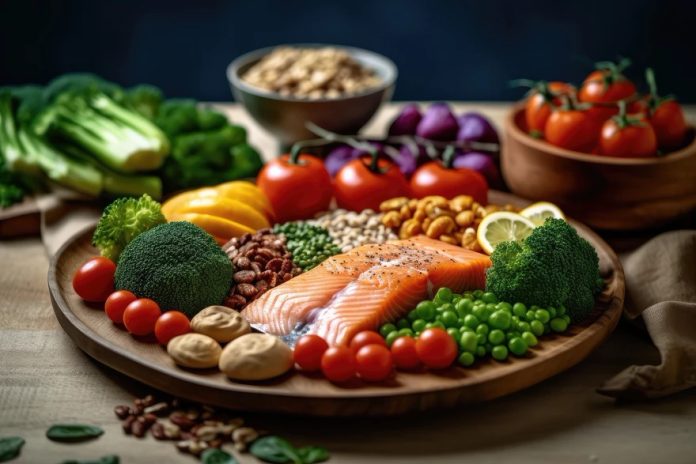Iron is a vital mineral that plays a crucial role in many bodily functions, including the production of hemoglobin, which carries oxygen in the blood. Ensuring adequate iron intake is essential for overall health, as iron deficiency can lead to anemia, fatigue, and weakened immunity. In this article, we will explore the importance of iron, the different types of dietary iron, and a variety of iron-rich foods to help you maintain optimal levels of this essential nutrient.
The Importance of Iron in the Diet
Iron is a key component of hemoglobin, which is responsible for transporting oxygen from the lungs to tissues throughout the body. It also plays a role in:
- Energy Production: Iron is necessary for the production of energy in cells, enabling the body to function effectively.
- Immune Function: Adequate iron levels are essential for a well-functioning immune system, helping the body fight off infections and diseases.
- Cognitive Development: Iron is crucial for brain development, especially in infants and young children. Deficiency during these formative years can lead to cognitive impairments.
- Temperature Regulation: Iron aids in maintaining body temperature by supporting various metabolic processes.
Types of Dietary Iron
There are two types of dietary iron: heme iron and non-heme iron. Understanding the difference between the two can help you choose the right foods for your iron needs.
- Heme Iron: This type of iron is found in animal products and is more easily absorbed by the body. Sources include red meat, poultry, and fish. Heme iron accounts for approximately 40% of the iron in meat and is absorbed at a rate of 15-35%.
- Non-Heme Iron: Found in plant-based foods, dairy products, and eggs, non-heme iron is less efficiently absorbed by the body, with an absorption rate of about 2-20%. However, consuming vitamin C alongside non-heme iron sources can enhance absorption.
Foods Rich in Iron
Incorporating a variety of iron-rich foods into your diet is essential for meeting your daily iron needs. Here is a comprehensive list of foods that are rich in iron:
Animal Sources
- Red Meat: Beef, lamb, and pork are excellent sources of heme iron. Lean cuts of beef, such as sirloin and tenderloin, contain higher iron levels.
- Poultry: Chicken and turkey, especially dark meat, provide good amounts of heme iron. Chicken liver is particularly high in iron.
- Fish and Seafood: Oysters, clams, and mussels are among the richest sources of heme iron. Fatty fish like salmon and tuna also contain iron, though in lower amounts.
Plant Sources
- Legumes: Lentils, chickpeas, beans, and peas are rich in non-heme iron. They also provide protein and fiber, making them an excellent addition to a balanced diet.
- Nuts and Seeds: Pumpkin seeds, sesame seeds, hemp seeds, and cashews are great sources of iron. Adding them to salads, smoothies, or snacks can boost your iron intake.
- Dark Leafy Greens: Spinach, kale, Swiss chard, and collard greens are non-heme iron sources. Cooking these greens can help improve iron absorption.
- Whole Grains: Quinoa, brown rice, oatmeal, and fortified cereals provide iron, along with essential nutrients and fiber.
- Tofu and Tempeh: These soy-based products are excellent sources of non-heme iron and can be used in a variety of dishes.
Fortified Foods
Many cereals, bread, and plant-based milk products are fortified with iron. Always check the labels for iron content, as these can significantly contribute to your daily intake.
Tips for Enhancing Iron Absorption
To maximize iron absorption, consider the following tips:
- Pair Iron-Rich Foods with Vitamin C: Consuming foods high in vitamin C (such as oranges, strawberries, bell peppers, and broccoli) alongside non-heme iron sources can enhance absorption.
- Avoid Certain Beverages During Meals: Tannins found in tea and coffee can inhibit iron absorption. It’s best to consume these beverages between meals rather than during.
- Cook with Cast Iron Cookware: Using cast iron pots and pans can increase the iron content of your food, particularly when cooking acidic foods like tomatoes.
- Limit Calcium Intake During Iron-Rich Meals: Calcium can compete with iron for absorption, so it’s wise to separate calcium-rich foods or supplements from iron-rich meals.
Recommended Daily Iron Intake
The recommended daily allowance (RDA) for iron varies by age, gender, and life stage:
- Adult Men: 8 mg
- Adult Women (ages 19-50): 18 mg
- Adult Women (ages 51 and older): 8 mg
- Pregnant Women: 27 mg
- Breastfeeding Women: 9-10 mg
Iron is an essential nutrient that plays a vital role in various bodily functions, including oxygen transport, energy production, and immune function. By incorporating a variety of iron-rich foods into your diet—both heme and non-heme sources—you can help maintain optimal iron levels and prevent deficiency.
Whether you are an omnivore, vegetarian, or vegan, there are plenty of options available to meet your iron needs. With a little planning and attention to dietary choices, you can ensure that you consume sufficient iron to support your health and well-being. If you suspect you have an iron deficiency or have specific dietary concerns, it’s always advisable to consult a healthcare professional or registered dietitian for personalized guidance.















